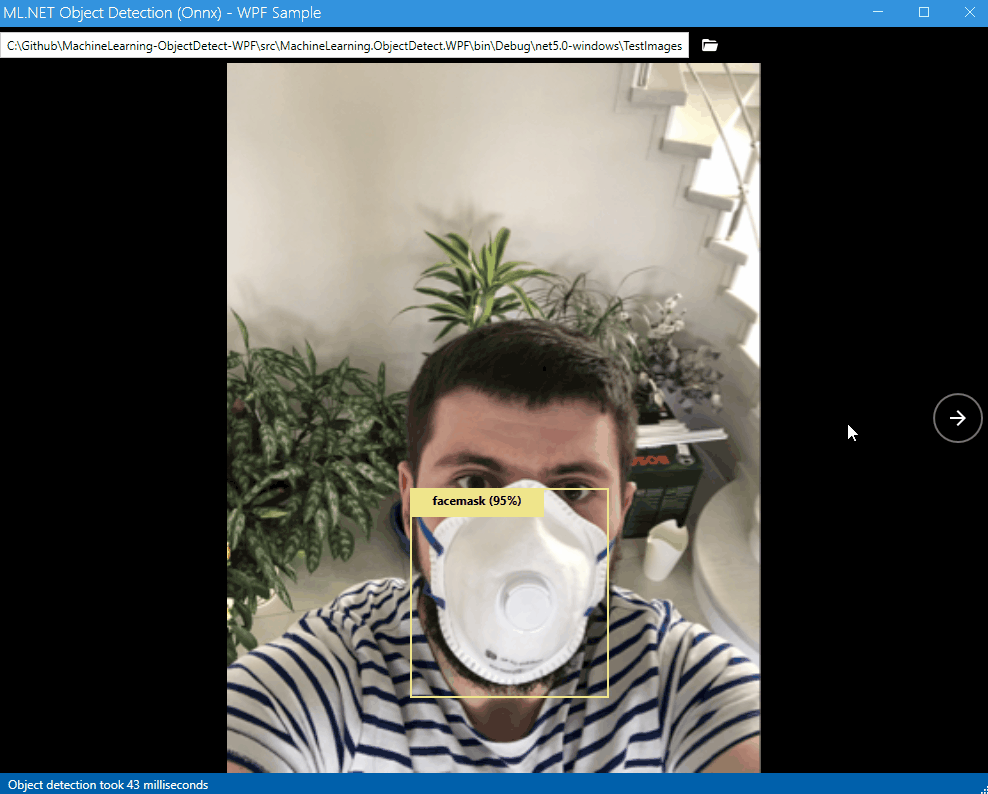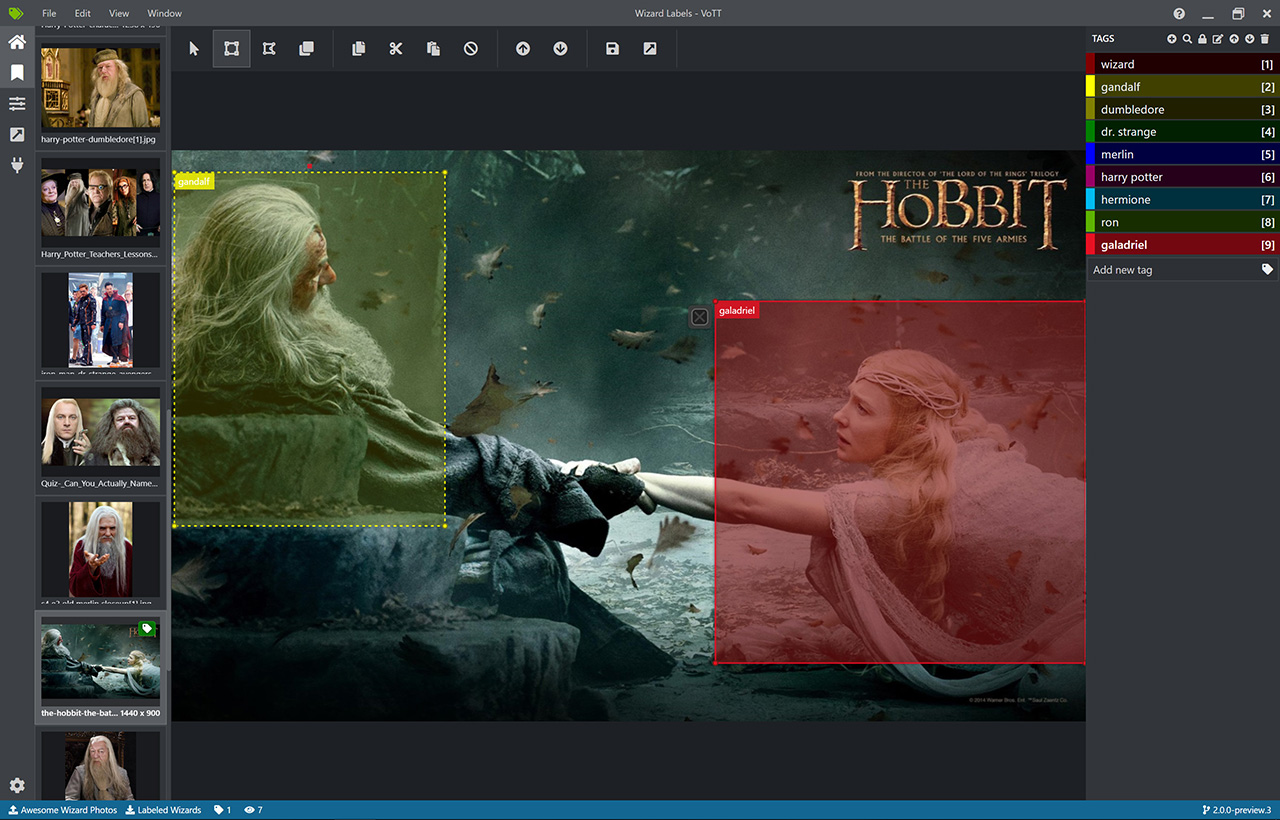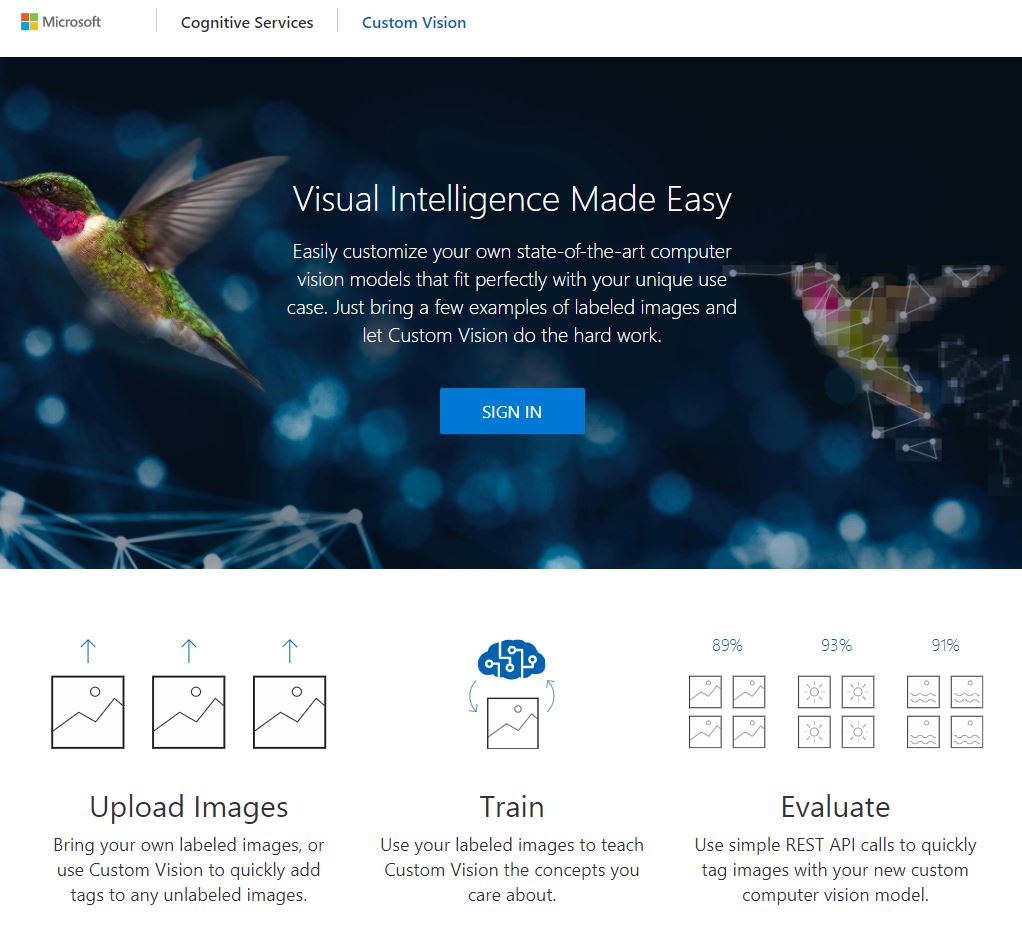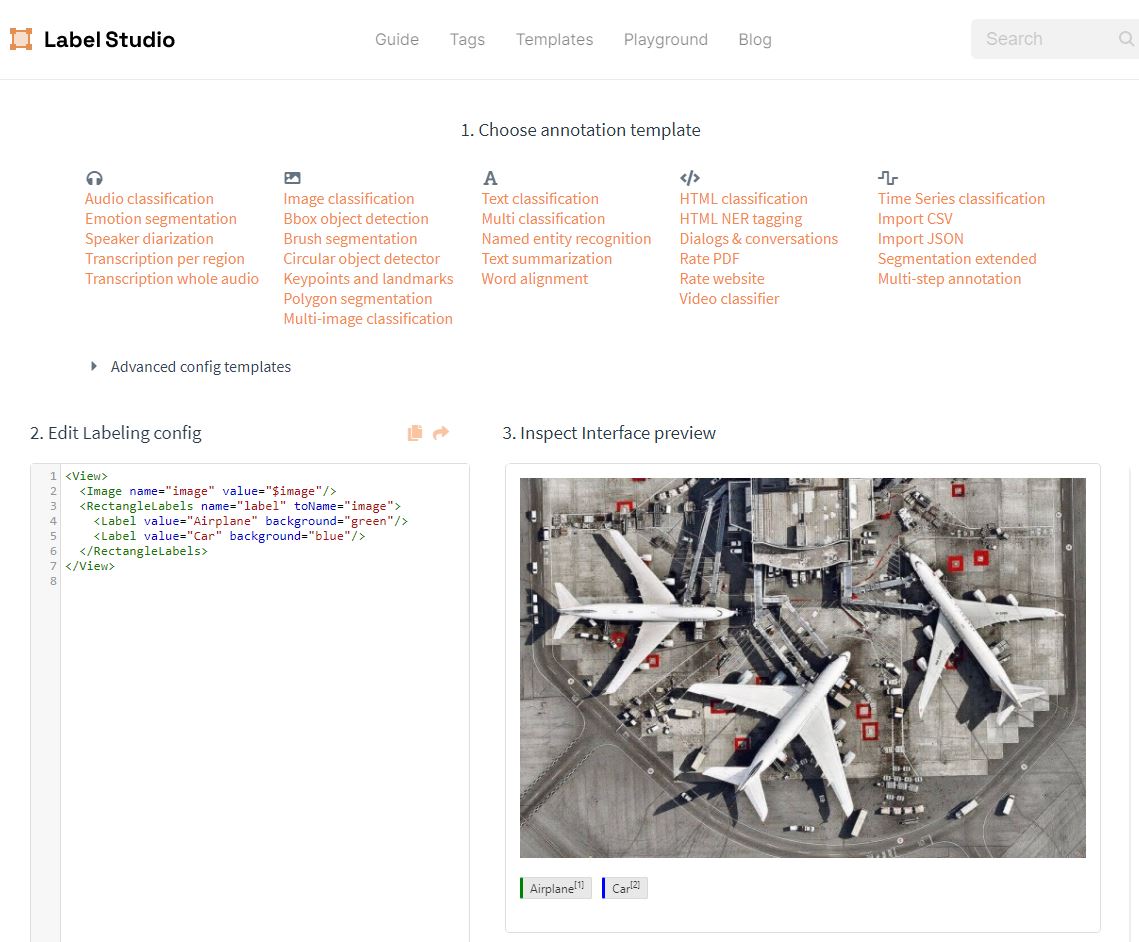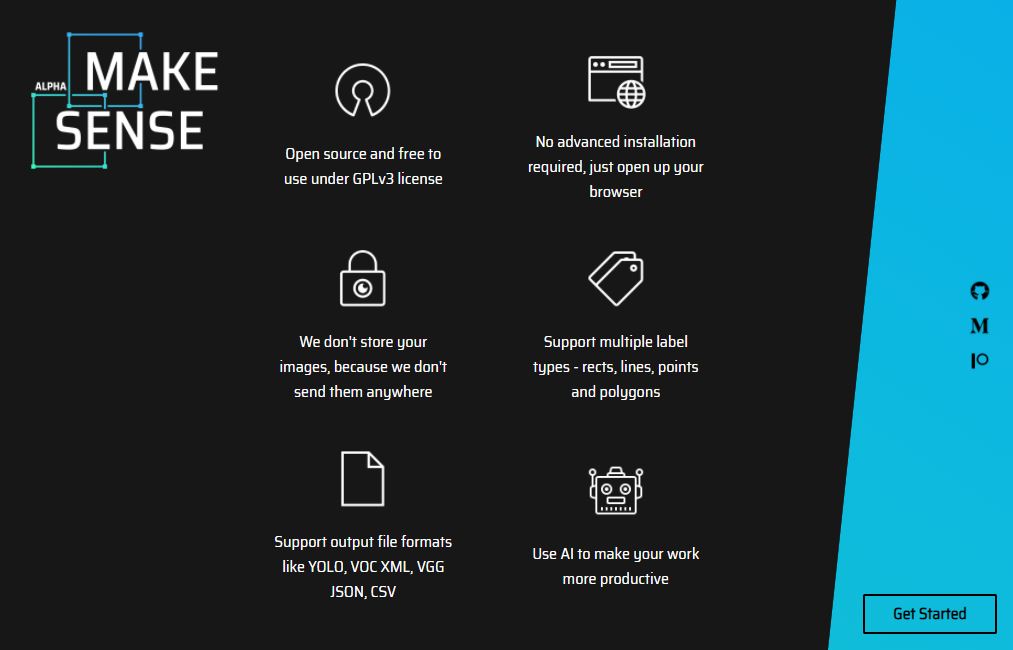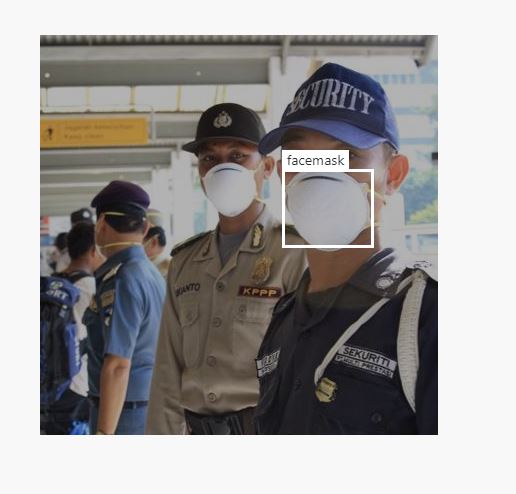Complete sample for object detection in .NET using Machine Learning and WPF. From image labeling to training to final app.
For sample/demonstration/understanding of the full cycle I will label and train with just a few images of a very simple problem. Labeling and model training depending the domain and complexity of the project is something best done by a Data Scientist specialist. For .NET developers I think the important part is Part 3 so they can integrate with their software and add value. Labeling and model training can be outsource to a specialist or use one of the several public models available made by experts.
The first step to detect objects in images/video is to label them. There are several applications and websites for this. Opensource, comercial, local only, cloud backend to fit everyone needs/taste. Here is a short list of some of them:
-
VoTT - Microsoft Visual Object Tagging Tool
Can be run as a desktop application and works with local files or directly online using Azure Blob Storage. It allows to export to several formats (Pascal VOC, TensorFlow recods, Azure Custom Vision Service, etc)
-
It's part of Azure Cognitive Services and allows to upload images and label them directly in the web.
-
Open Source data labeling tool. Apart from labeling images for object detection it can also work with audio, texts, etc. You can run it locally with Docker in one minute.
-
Open Source annotation tool. It runs directly on the web and allows to export the bounding box labels in many formats.
-
Comercial options (some with Free Tier)
-
For this sample I used this simple tool for labeling and training. I used the facemask dataset from Kaggle and I just used 20 images for training and a few for testing. Labeling took me about two minutes and I did it very rough and model training took just 5 minutes.
-
ML.NET can work with TensorFlow models or you can convert to ONNX format
-
If you are comfortable with Python and export to ONNX
In this sample I chose to use a .NET 5 WPF application so that the sample is helpful for .NET desktop developers. Obviously deploying the previous model as a Docker container or a REST API endpoint for web use is also possible and maybe even simpler and they are several samples/tutorials online for this.
The sample is based on Microsoft Machine Learning Sample.
You can check the source code here. As with most of my WPF projects I used MahApps and ReactiveUI but those are not required.
